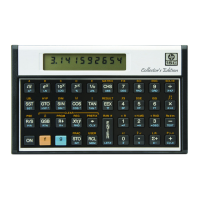Introduction v
solder used in their assembly). The letter S was used for scientific models,
such as the later HP 35s model. Some updated models have the symbol + or
the Roman numeral II added at their end. A few even have both, such as the
HP 10bII+. This makes for a wide range of naming conventions!
The newly introduced HP-25C added continuous memory to the already
successful original HP-25 model. While the HP-65 and HP-67 could store
programs and data on magnetic cards, the HP-25 did not have a card
reader/writer. When turned off, the calculator lost any data or programs that
had been loaded. The HP-25C used an entirely new chip design process from
HP that allowed it to save programs and data even when turned off. It is
difficult to overstate users’ amazement at first seeing a device remember
things when turned off—something that is taken for granted today.
On July 1, 1977, HP introduced the successor to the HP-25C, named the HP-
29C, along with a printing version of this model two months later, the HP-
19C. The HP-29C model was the same size and shape as the HP-25C, but
doubled the available program memory and added incremental
programming and math functions. While a great machine in its own right, this
model had a relatively short time in the limelight due to the advancement of
technology and capability being built into each new calculating device.
On April 17, 1978, HP announced the Series E machines, designed as a family
of less expensive models. They ranged from an
inexpensive scientific model (the HP-31E) to a 49-
step programmable (the HP-33E) to two financial
calculator models (the HP-37E and HP-38E—the
latter of which was programmable too) following in
the footsteps of earlier finance machines.
On July 16, 1979, HP introduced a new computing
standard, a top-of-the-line model serving as the
heart of a computing system, the HP-41C, the first HP
handheld calculator with a Liquid Crystal Display
(LCD) and the ability to display letters as well as
numbers. This model led down the path of additional
advanced RPN models such as the HP-42S but also
the transition to RPL (standing for Reverse Polish Lisp
or ROM-based Procedural Language) models such as
the HP 48SX, HP 48GX, HP 49G, HP 49g+, and the HP
50g. HP then introduced the HP Prime in 2014, their most capable, powerful
calculator ever made. That, however, is a story for another time.
HP-41C

